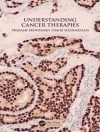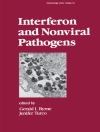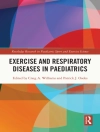This book is devoted to all the aspects of pediatric minimally invasive surgery and is written under the patronage of the European Society of Pediatric Endoscopic Surgery (ESPES) with the participation of leading international experts on Pediatric MIS. Comprising more than 50 chapters, the book begins with an introductory section describing the general and technical aspects of MIS approaches including laparoscopy, thoracoscopy, retroperitoneoscopy and robotic surgery. The main part of the book is divided into five subsections, each of which focuses on a specific system: thorax, abdomen, urology, gynecology and varia. For each subsection, the book examines several pathologies, accurately describing their clinical and diagnostic aspects and providing detailed information on the operative techniques, tips and tricks used in their treatment. Further, the book addresses potential complications in MIS and better ways to manage and prevent them.
The
volume will be of interest for pediatric surgeons, pediatric urologists or other professionals that need to access accurate descriptions of the MIS approaches adopted for the different surgical pathologies. At the same time, it addresses the needs of novices, including trainees, looking for general information on the management of the various diseases encountered in the pediatric population.
Tabla de materias
PART I: BASICS.- Chapter 1: Equipment and Instruments.- Chapter 2: Ergonomics in Minimally Invasive Surgery.- Chapter 3: Check list and Preoperative Preparation.- Chapter 4: Basis of Laparoscopic Approach.- Chapter 5: Basis of Retroperitoneoscopic Approach.- Chapter 6: Basis of Thoracoscopic Approach.- Chapter 7: Basis of Pediatric Robotics.- Chapter 8: Training in Pediatric Minimal Access Surgery.- Chapter 9: Medico-legal Aspects in Pediatric Minimally Invasive Surgery.- Chapter 10: Multimedia Aspects of Pediatric Minimally Invasive Surgery.- Chapter 11: A Short History of the European Society of Pediatric Endoscopic Surgeons (ESPES).- Chapter 12: Anesthesia in Pediatric Minimally Invasive Surgery.- PART II: CHEST.- Chapter 13: Thoracoscopic Lung Biopsy.- Chapter 14: Management of Pleural Empyema.- Chapter 15: Thoracoscopic Lobectomy.- Chapter 16: Thoracoscopic Management of Pulmonary Sequestration.- Chapter 17: Thoracoscopic Management of the Mediastinal Masses.- Chapter 18: Primary Focal Hyperhidrosis: Surgical Management.- Chapter 19: Thoracoscopic Treatment of Chylothorax.- Chapter 20: Thoracoscopic Congenital Diaphragmatic Hernia (CDH) Repair.- Chapter 21: Thoracoscopic Repair of Esophageal Atresia and/or Tracheoesophageal Fistula.- PART III: ABDOMEN.- Chapter 22: Laparoscopic Management of Congenital Morgagni Hernia (CMH).- Chapter 23: Laparoscopic Treatment of Esophageal Achalasia.- Chapter 24: Antireflux Surgery for Gastro-Esophageal Reflux Disease (GERD).- Chapter 25: MIS Gastrostomy.- Chapter 26: Laparoscopic Pyloromyotomy.- Chapter 27: Laparoscopic Jejunostomy.- Chapter 28: Minimally Invasive Management of Duodenal and Jejunal Atresia.- Chapter 29: Minimally Invasive Surgery for Malrotation of the Intestine and Midgut Volvulus.- Chapter 30: Laparoscopic Approach to Intestinal Duplication.- Chapter 31: Laparoscopy and Laparoscopic-assisted Approach for Adhesive Small Bowel Obstruction.- Chapter 32: MIS Management of Intussusception.- Chapter 33: Current Operative Management of Meckel Diverticulum.- Chapter 34: Bariatric Surgery for Pediatric Patients.- Chapter 35: Laparoscopic Liver Surgery.- Chapter 36: Laparoscopic Management of Choledochal Cyst.- Chapter 37: Laparoscopic Cholecystectomy.- Chapter 38: Laparoscopic Pancreatic Surgery.- Chapter 39: Laparoscopic Splenectomy.- Chapter 40: Laparoscopic Partial Splenectomy.- Chapter 41: Minimal Invasive Management of Lymphatic Malformations.- Chapter 42: Laparoscopic assisted Endorectal Pull-through in Hirschsprung’s Disease and Familial Adenometous Polyposis.- Chapter 43: Laparoscopic Approach to Anorectal Malformations.- Chapter 44: Laparoscopic Management of Acute Appendicitis.- Chapter 45: Laparoscopic Cecostomy for Constipation and Incontinence.- Chapter 46: Laparoscopic Management of Persistent Complete Rectal Prolapse in Children.- Chapter 47: Minimal Access Colorectal Surgery in Pediatric Age.- PART IV: UROLOGY.- Chapter 48: Laparoscopic and Retroperitoneoscopic Nephrectomy.- Chapter 49: Laparoscopic Partial Nephrectomy.- Chapter 50: MIS Management of Duplex Kidneys.- Chapter 51: Laparoscopic Management of Intrinsic Uretero-Pelvic Junction Obstruction (UPJO).- Chapter 52: Laparoscopic Management of Extrinsic Uretero-Pelvic Junction Obstruction (UPJO) by Crossing Vessels.- Chapter 53: Laparoscopic Approach to Urinary Stones.- Chapter 54: Vesico-Ureteric Reflux (VUR) – Laparoscopic Lich Gregoir Repair.- Chapter 55: Vesico-ureteral Reflux (VUR) – Endoscopic Treatment.- Chapter 56: Vesico-ureteral Reflux (VUR) – Pneumovesicoscopic Repair.- Chapter 57: Laparoscopic Decortication for Renal Cysts in Children.- Chapter 58: MIS Management of Urachal Pathology.- Chapter59: Laparoscopic Resection of Wilms’ Tumours.- Chapter 60: Laparoscopic Mitrofanoff Procedure.- Chapter 61: MIS Management of Posterior Urethral Valves (PUV).- Chapter 62: Primary Obstructive Megaureter: Endourological Treatment.- Chapter 63: Ureterocele: Minimally Invasive Endoscopic Treatment.- Chapter 64: Laparoscopic Adrenalectomy in Children.- Chapter 65: Endoscopic Management of Bladder Tumors in Children.- PART V: GYNAECOLOGY.- Chapter 66: Laparoscopic Management of Ovarian Cysts.- Chapter 67: Laparoscopy for Ovarian Tumors.- Chapter 68: Laparoscopic Approach to Paratubal and Paraovarian Cysts.- Chapter 69: Laparoscopic-assisted Vaginoplasty.- Chapter 70: Ovarian Cryopreservation.- PART VI: MISCELLANEA.- Chapter 71: Laparoscopic Inguinal Hernia Repair.- Chapter 72: Laparoscopic Management of Pediatric Varicocele.- Chapter 73: MIS Management of Pilonidal Sinus Disease.- Chapter 74: Laparoscopic Approach to Non Palpable Testis.- Chapter 75: Complications in Pediatric MIS.- Chapter 76: Fetoscopy: The Minimally Invasive Fetal Surgery.- Chapter 77: Application of Mimimally Invasive Surgery in Pediatric Oncology.
Sobre el autor
Prof. Ciro Esposito is Chief of the Pediatric Surgery Unit at the University of Naples Federico II, and Director of the Pediatric Surgery Training Program at the same University; he is also Director of the Training Courses in Pediatric MIS at the Center of Biotechnology, Cardarelli Hospital, Naples, Italy, President of the European Society of Pediatric Endoscopic Surgery (ESPES), past President of the Italian Society of Videosurgery in Infancy (SIVI), and Honorary Member of the French Academy of Surgery. he has published more than 350 papers in the field.
Prof. François Becmeur is Leader Expert of Pediatric MIS and Chief of the Pediatric Surgery Unit at the CHU Hautepierre, Strasbourg, France. He is also Director of Training Courses in Pediatric MIS at the IRCAD/EITS in Strasbourg, France. His fields of interest are: laparoscopy; thoracoscopy, MIS neonatal surgery; surgical oncology, and MIS education.
Prof. Henri Steyaert is Head of the Department of Pediatric Surgery and Urology at Queen Fabiola Children’s University Hospital of the Université Libre de Bruxelles (ULB) and Leader Expert of Pediatric MIS. Member of several pediatric surgical associations – the IPEG; ESPES; EUPSA; SFCP, he is President Elect of the ESPES and Past President of the French association of Pediatric Minimal Invasive Surgery (GECI). His fields of interest are: laparoscopy, endoscopy, robotics, fetal surgery and pediatric urology.
Prof. Dr. Philipp Szavay is currently Professor of Pediatric Surgery and Head of the Department of Pediatric Surgery at the Children’s Hospital in Lucerne, Switzerland. He is a member of several pediatric surgical associations – IPEG, ESPES, EUPSA, ESPU, as well as the German and the Swiss Society of Pediatric Surgery. As for the IPEG he serves as the European representative in the Executive Board. He has a strong focus on surgical education especially in the field ofminimally invasive techniques and directed numerous national and international courses respectively such as for IPEG, ESPES, EUPSA, ESPU, IRCAD and others. His fields of interest are laparoscopy, thoracoscopy and pediatric laparoscopic urology.












